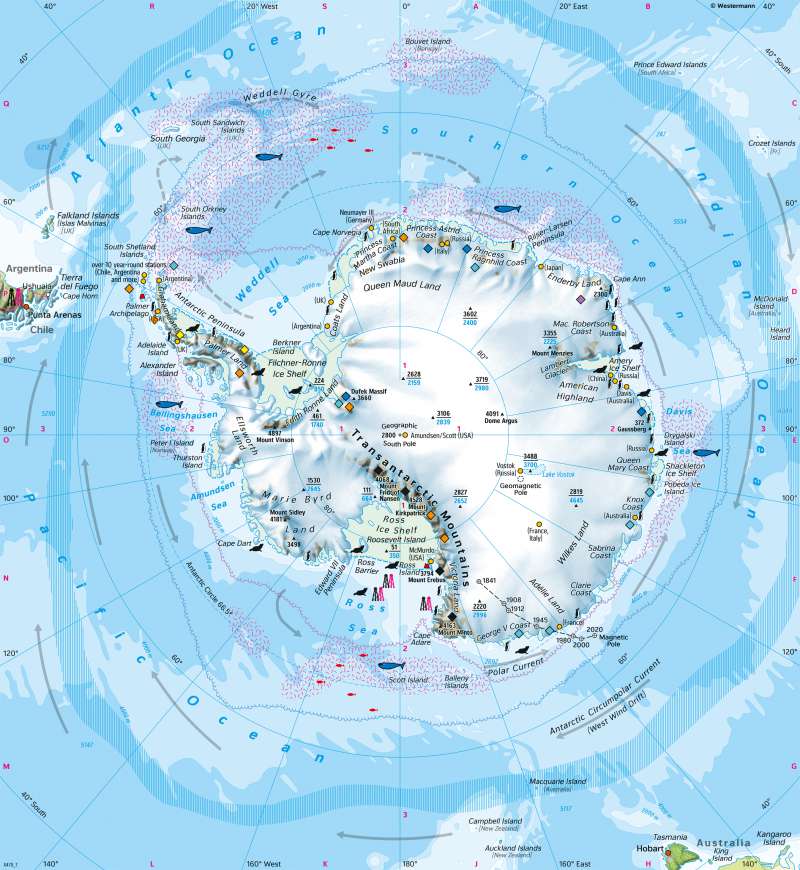South Polar Region (Antarctic) - Land cover
Antarctic and arctic environment
978-3-14-100890-6 | Page 198 | Ill. 1

Overview
The Southern Ocean, which surrounds Antarctica, is formed by the southern parts of the Pacific, Indian and Atlantic Oceans. The continent of Antarctica is surrounded by a zone where the cold Antarctic water sinks below warmer water masses heated in the tropics: the so-called Antarctic Convergence.
Climate and habitat
The extent of ice in the Southern Ocean varies greatly depending on the season. The annual mean temperature at the South Pole station Wostock at an altitude of 3420 metres is -55 °C (see climate diagram). In 2004, a cold world record of -98.6 °C was measured northwest of the station. In contrast to the North Pole, the South Pole has thick inland ice that rises up to 4300 metres above sea level. The ice covers the islands of Antarctica. Only individual mountain ranges, such as the Transantarctic Mountains, penetrate the ice. The highest elevation in Antarctica is Mount Vinson at 4897 metres. Despite the hostile conditions for humans, the coasts and the sea are the habitat for whales, seals, penguins, fish. and krill (tiny crustaceans). Raw materials have also been found in many places, but their exploitation, although technically possible, would still be too expensive at present and is banned (initially until 2042). The inland ice is the most important freshwater reservoir on earth. Icebergs drifting from Antarctica could be used for freshwater extraction. Technical developments for transporting the icebergs have already been tested on a trial basis.
Exploration and protection
Antarctic research is governed by the SCAR Treaty (Scientific Committee on Antarctic Research; Antarctic Treaty), which was concluded in 1959. The treaty was initially signed by twelve states and extended in 1991. Of the 46 member countries that have joined in the meantime, 28, including Germany, are allowed to set up a research station. In 1964, the first agreements on the conservation of Antarctic flora and fauna came into force. In 1978, the treaties for the protection of seals were signed. In 1988, a preliminary agreement was reached on the exploration of raw materials with due regard for environmental protection. In 1992, the exploitation of mineral resources was banned for the time being, except for scientific purposes, and the status of Antarctica as a nature reserve was established for an initial period of 50 years. Due to the ruthless whaling in the Antarctic since the 19th century, the International Whaling Commission (IWC) was founded in 1932. The IWC is supposed to regulate the population of marine mammals by securing catch quotas. As late as the 1960s, up to 40,000 whales were caught annually. From 1965, the endangered species were placed under protection. Today, commercial whaling is banned, with the exception of minke whales. However, whaling for "scientific purposes" is still permitted. In 1994, a 21 million square kilometre whale sanctuary was established around Antarctica. Norway, Iceland, and Japan are the only countries in the world that continue whaling.




